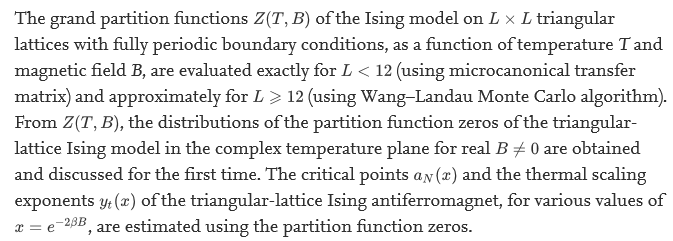Acoustic diffraction by a flat airfoil in uniform flow
전원주
|
AIAA Journal
46/12
(2008)
Diffraction by a flat airfoil in uniform flow in analytically examined, g on the acquisition of an accurate series solution for both low-and high-frequency incident waves. formulation of integral equations is based on the use of the Wiener-Hopf technique in the complex domain. As the kernels of the Integral equations are multivalued functions having a branch cut in the complex domain, the unknown in the integral operator is assumed to be a constant. Therefore, the solution is a zeroth-order approximate solution adequate for a high-frequency problem. In this stury, the unknown is expanded by a Taylor series of an arbitrary order in the analytic region, and the solution is obtained in series form involving a special function called a generalized gamma function Gamma(m) (u,z). As the generalized gamma functions occuring in finite diffraction theroy have the specific argument u as "nonnegative Integer +1/2," the authors used their previously determined exact and closed-form formulas of this special function to obtain the complete series solution. The present series solution exhibits faster convergence at a high frequency compared to a low frequency, whereas the Mathieu series solution in the elliptic coordinates converges faster at a low frequency relative to a higher frequency. Through exact and asymptotic evaluations of inverse Fourier transforms, the scattered and total acoustic fields are visualized in a physical domain and each term of the solution is physically interpreted as 1) semi-infinite leading-edge scattering, 2) trailing-edge correction, and 3) interaction between leading and trailing edges, respectively.
- 초록
Diffraction by a flat airfoil in uniform flow in analytically examined, g on the acquisition of an accurate series solution for both low-and high-frequency incident waves. formulation of integral equations is based on the use of the Wiener-Hopf technique in the complex domain. As the kernels of the Integral equations are multivalued functions having a branch cut in the complex domain, the unknown in the integral operator is assumed to be a constant. Therefore, the solution is a zeroth-order approximate solution adequate for a high-frequency problem. In this stury, the unknown is expanded by a Taylor series of an arbitrary order in the analytic region, and the solution is obtained in series form involving a special function called a generalized gamma function Gamma(m) (u,z). As the generalized gamma functions occuring in finite diffraction theroy have the specific argument u as "nonnegative Integer +1/2," the authors used their previously determined exact and closed-form formulas of this special function to obtain the complete series solution. The present series solution exhibits faster convergence at a high frequency compared to a low frequency, whereas the Mathieu series solution in the elliptic coordinates converges faster at a low frequency relative to a higher frequency. Through exact and asymptotic evaluations of inverse Fourier transforms, the scattered and total acoustic fields are visualized in a physical domain and each term of the solution is physically interpreted as 1) semi-infinite leading-edge scattering, 2) trailing-edge correction, and 3) interaction between leading and trailing edges, respectively.
- 초록
Diffraction by a flat airfoil in uniform flow in analytically examined, g on the acquisition of an accurate series solution for both low-and high-frequency incident waves. formulation of integral equations is based on the use of the Wiener-Hopf technique in the complex domain. As the kernels of the Integral equations are multivalued functions having a branch cut in the complex domain, the unknown in the integral operator is assumed to be a constant. Therefore, the solution is a zeroth-order approximate solution adequate for a high-frequency problem. In this stury, the unknown is expanded by a Taylor series of an arbitrary order in the analytic region, and the solution is obtained in series form involving a special function called a generalized gamma function Gamma(m) (u,z). As the generalized gamma functions occuring in finite diffraction theroy have the specific argument u as "nonnegative Integer +1/2," the authors used their previously determined exact and closed-form formulas of this special function to obtain the complete series solution. The present series solution exhibits faster convergence at a high frequency compared to a low frequency, whereas the Mathieu series solution in the elliptic coordinates converges faster at a low frequency relative to a higher frequency. Through exact and asymptotic evaluations of inverse Fourier transforms, the scattered and total acoustic fields are visualized in a physical domain and each term of the solution is physically interpreted as 1) semi-infinite leading-edge scattering, 2) trailing-edge correction, and 3) interaction between leading and trailing edges, respectively.
More




